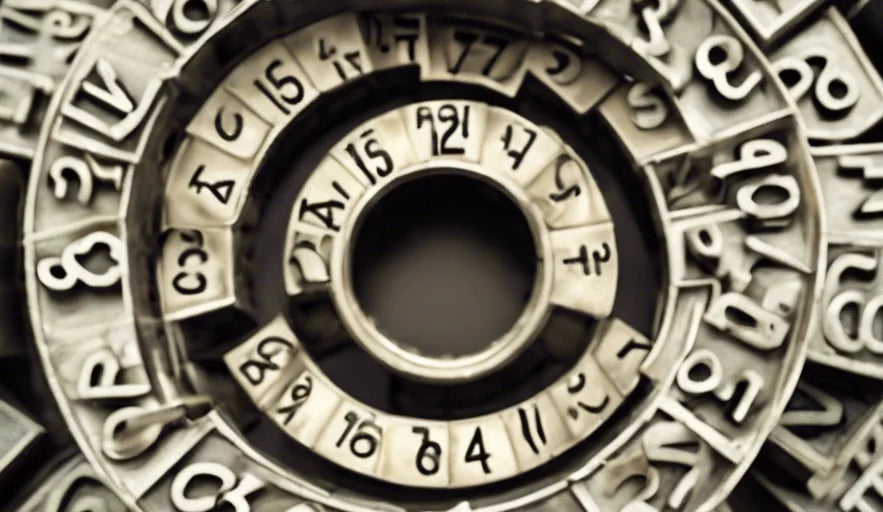
Decoding Jewelry: What the Numbers Mean
Understanding the Numbers on Your Jewelry
Jewelry has long been more than just an accessory; it serves as a powerful expression of personal style and sentiment. Each piece often embodies cherished memories, celebrates milestones, and carries emotional significance that transcends time. Yet, amid the beauty and elegance of our favorite rings, necklaces, and bracelets, there lies a hidden language waiting to be decoded. Have you ever taken a moment to ponder the numbers and markings adorning your jewelry? These inscriptions are not mere decorations; they reveal essential details about the piece’s metal purity, karatage, manufacturer, and even the quality of the gemstones. In this post, we’ll delve into the fascinating world of jewelry markings, providing you with the knowledge to better appreciate and understand your treasured items.
For Gold
1. Karat (K): This indicates the purity of gold in a piece of jewelry. The karat system is a fractional measure, with 24 karats representing pure gold. Here’s how different karat values correspond to the percentage of gold in the alloy:
- 24K: 100% pure gold, renowned for its rich yellow hue but can be softer and more prone to scratching, making it less suitable for everyday wear.
- 18K: 75% gold (18 out of 24 parts). This is a popular choice for high-quality jewelry, balancing purity and durability with a beautiful color.
- 14K: 58.3% gold (14 out of 24 parts). Widely used in the United States, 14K gold offers strength and affordability, making it a great option for everyday items.
- 10K: 41.7% gold (10 out of 24 parts). While still gold, it is more affordable and durable, though the color may be less rich compared to higher karats.
2. Millesimal Fineness: In Europe, you might encounter a three-digit number indicating parts per thousand of pure gold:
- 999: 99.9% pure gold, often referred to as "fine gold."
- 750: 75% pure gold (18K), indicating a high-quality alloy.
- 585: 58.5% pure gold (14K), a common mark for mid-range jewelry.
- 417: 41.7% pure gold (10K), which may be more affordable but still carries the value of gold.
For Silver
1. Sterling Silver: The most common marking is 925, indicating that the piece is 92.5% pure silver and 7.5% other metals, usually copper. This alloy is prized for its durability and lustrous finish.
2. Other Marks: In addition to sterling, you may encounter:
- 800: Indicates 80% silver, often found in older or European pieces.
- 830: This mark signifies 83% silver content, less common today but still significant in antique jewelry.
For Platinum
1. Platinum Marks: Look for markings like 950PT or simply 950, which indicate that the jewelry is composed of 95% platinum. Platinum is a dense, durable metal known for its hypoallergenic properties, making it a favored choice for fine jewelry.
Other Marks
1. Manufacturer’s Mark: This symbol or set of initials identifies the maker or designer of the jewelry, providing a connection to the craftsmanship behind the piece.
2. Country of Origin: Some pieces may have additional markings indicating where they were made, which can enhance their historical value and significance.
Gemstone Information
If there are numbers associated with gemstones, they may provide important information:
1. Carat Weight: This measures the weight of the gemstone, with one carat equaling 200 milligrams. Larger carat weights can significantly impact the value of the stone.
2. Quality Grades: For diamonds and some other gemstones, you may find quality grades noted that assess characteristics such as clarity, cut, and color. These grades are crucial for determining the stone's overall value and appeal.
Conclusion
When you see numbers on your jewelry, they generally relate to the type of metal and its purity, the maker, or specific qualities of any gemstones involved. Understanding these markings not only deepens your appreciation for your jewelry but also helps ensure you make informed decisions regarding care, maintenance, and potential resale.
If you're ever uncertain about the meaning of specific markings, don't hesitate to consult a jeweler. They can help interpret the inscriptions and provide insights into the value and care of your cherished pieces.
The Importance of Preserving Markings
While it may be tempting to remove or alter unsightly numbers or markings on your jewelry, it's generally inadvisable for several compelling reasons:
1. Identification: Markings indicate the metal's purity (such as 14K, 18K, or 925 for sterling silver) and help identify the manufacturer or designer. Removing these can complicate the verification of authenticity or value.
2. Resale Value: If you ever plan to sell or insure your jewelry, having the original markings intact can significantly enhance its value and appeal to potential buyers. Authenticity is a key factor in determining resale value.
3. Potential Damage: Attempting to remove or alter the markings risks damaging the piece, possibly affecting its integrity and finish. Preserving these details maintains the quality and craftsmanship of the jewelry.
4. Craftsmanship: Many jewelers and designers take pride in their work, and the marks serve as a testament to their craftsmanship. Removing them may detract from the piece’s overall character and narrative.
If you have concerns about the appearance of the markings or their visibility, consider consulting with a professional jeweler. They can offer advice on the best options to enhance your jewelry’s appearance without compromising its integrity.
